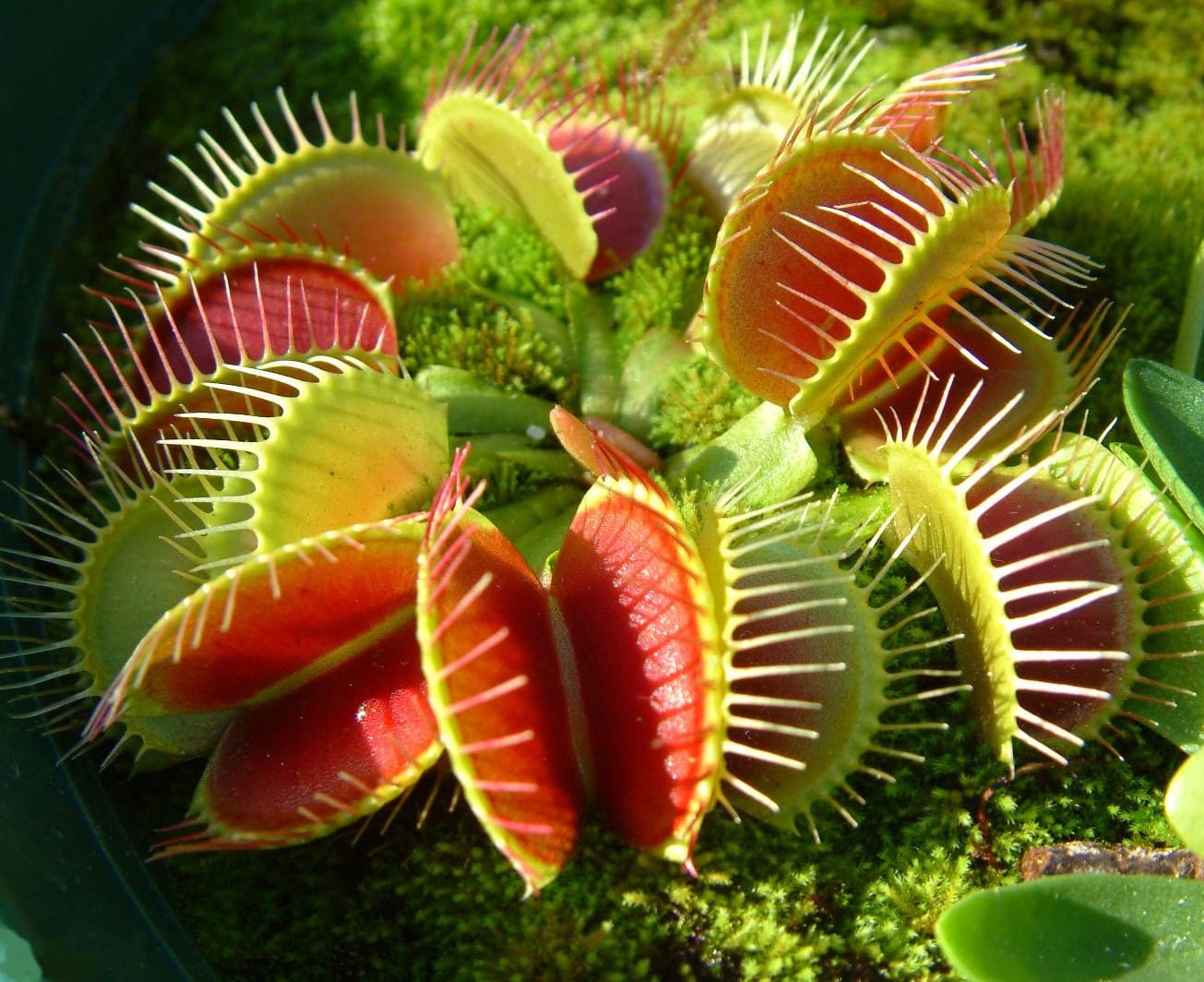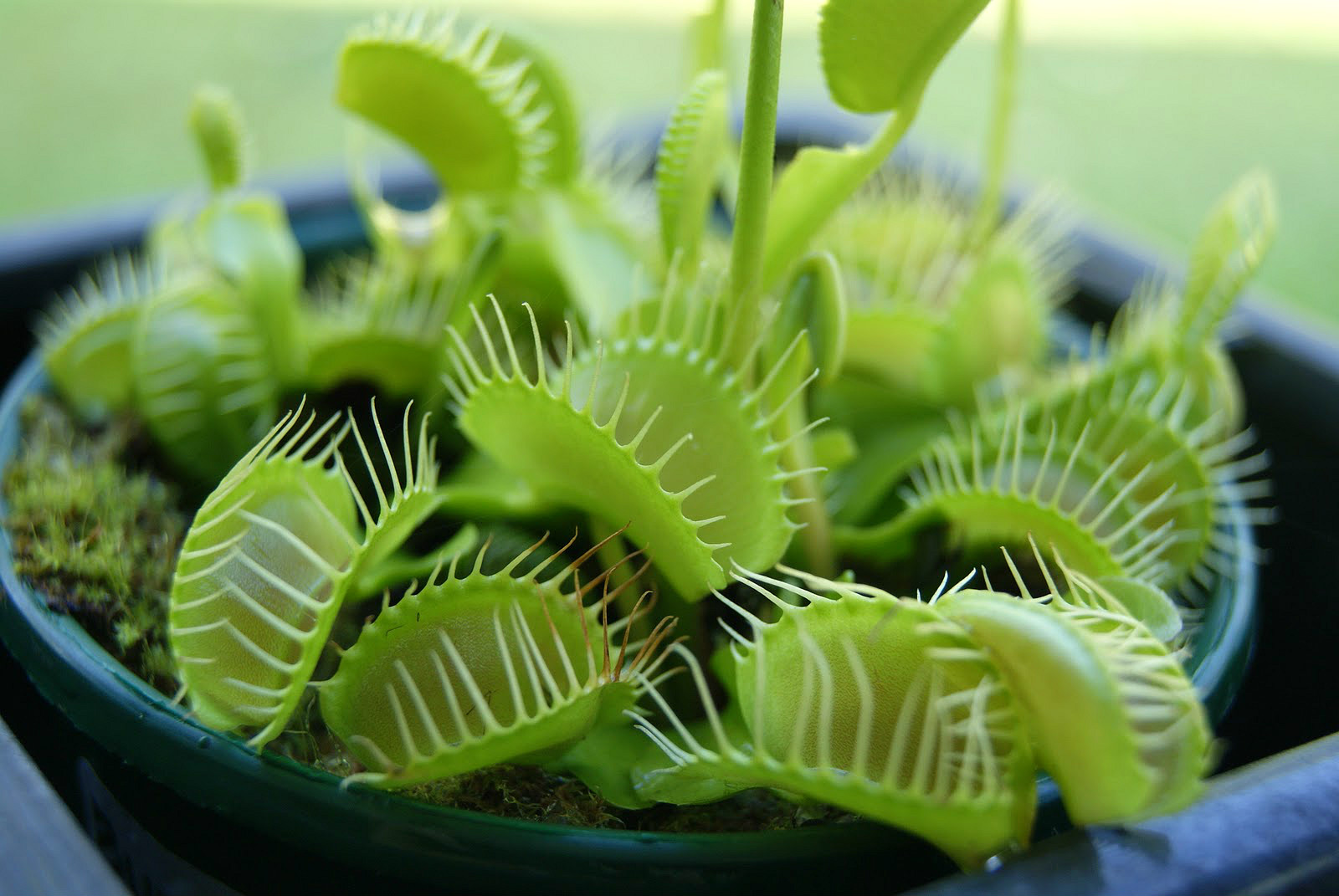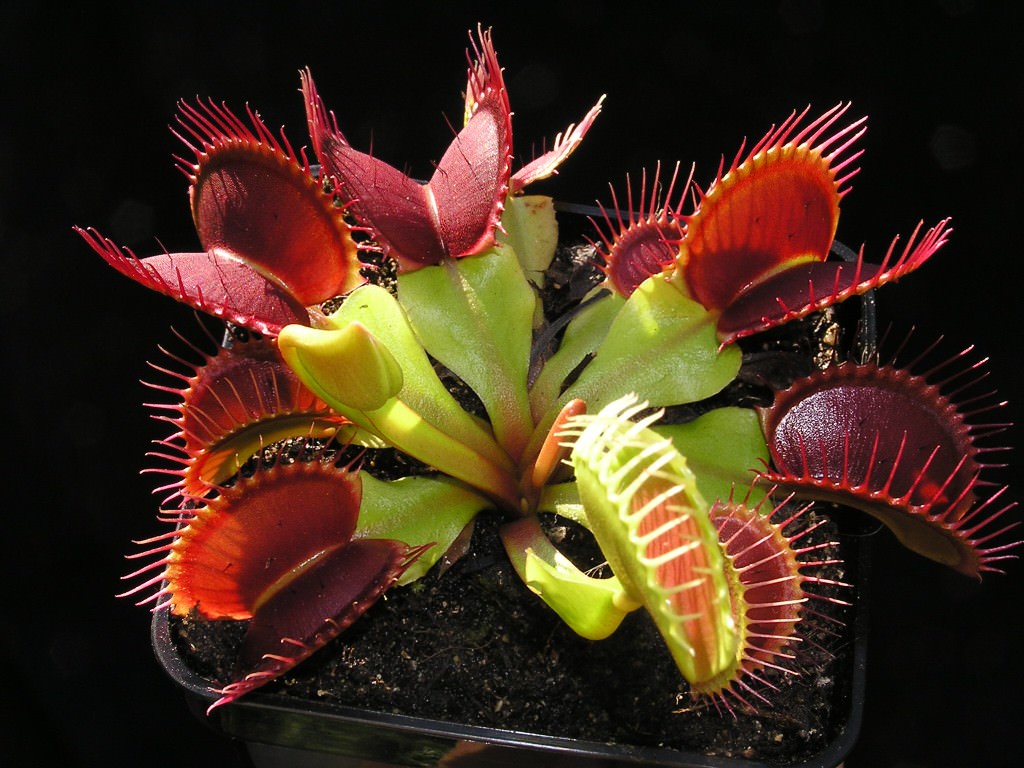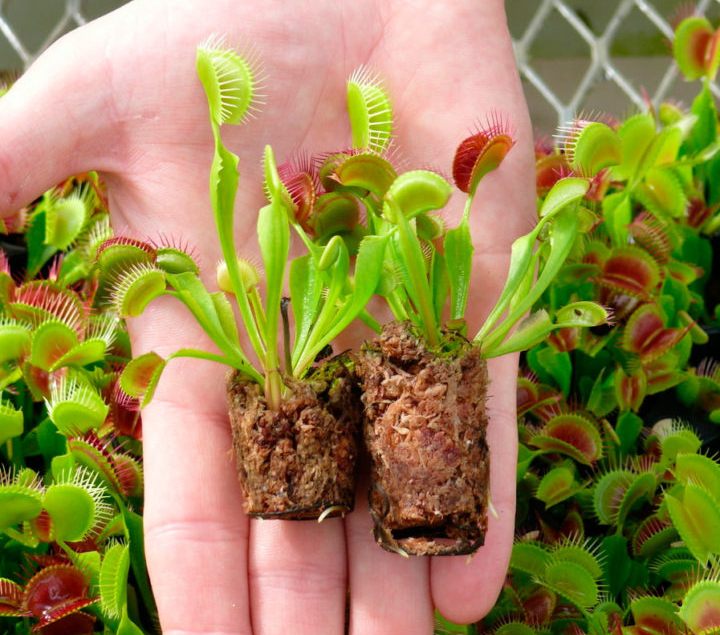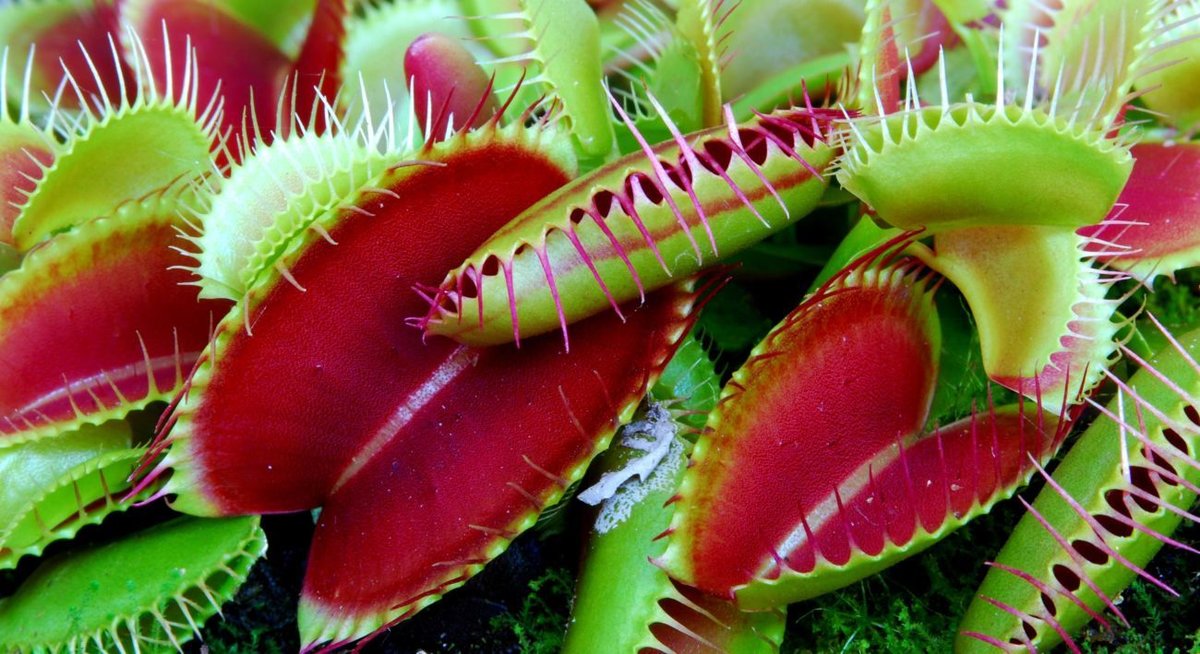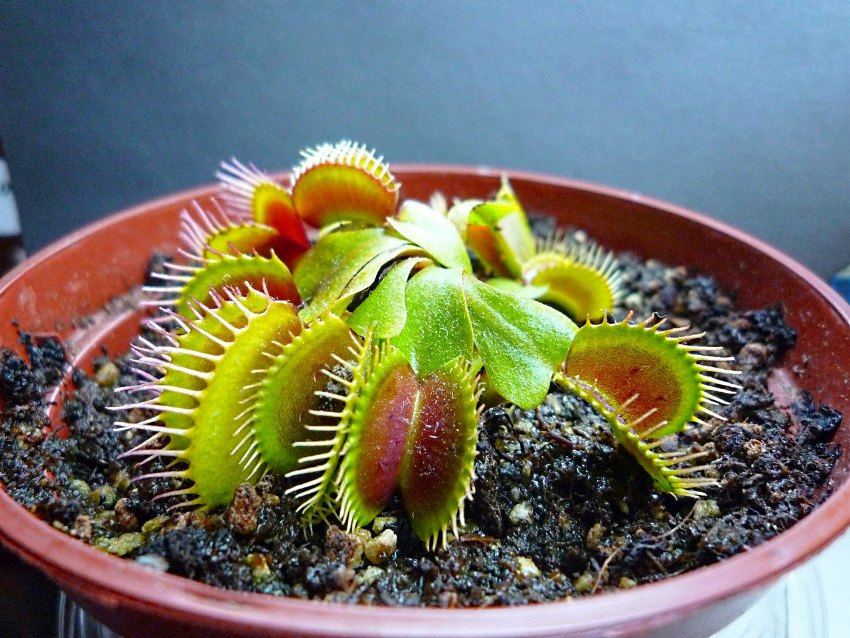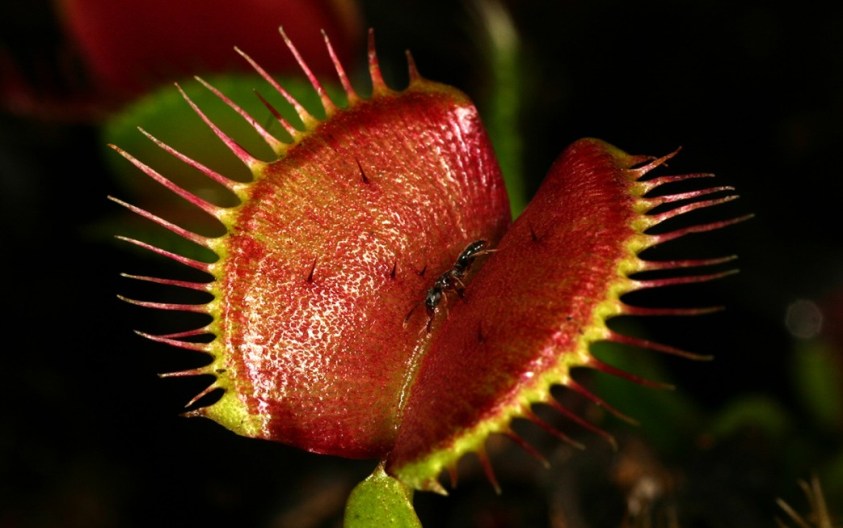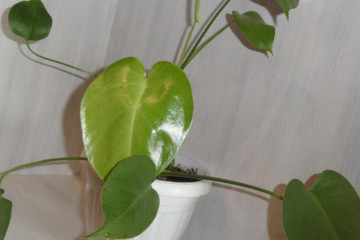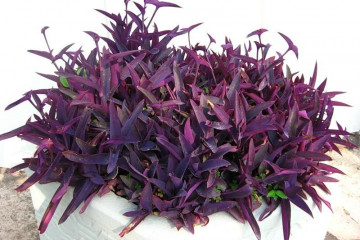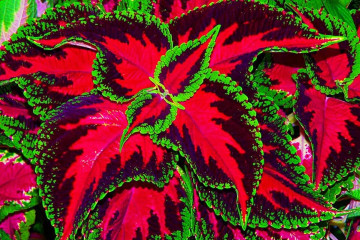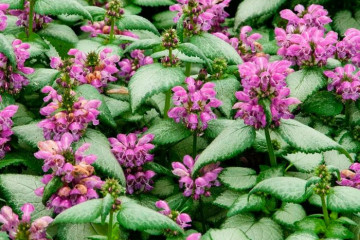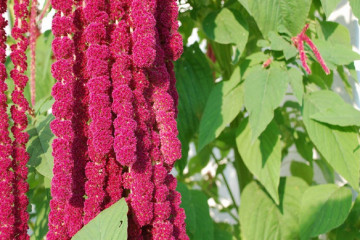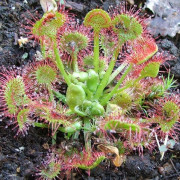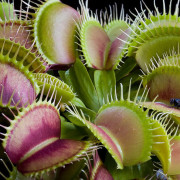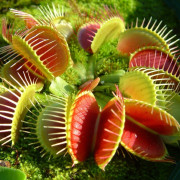Venus flytrap plant - how and what to feed
Content:
The world of plants is so diverse that, in addition to the usual fruiting, flowering representatives of the flora, there are real predators. We are talking about a predatory flower flycatcher, which can become a real thunderstorm of unpleasant insects. You can grow this amazing plant at home, since it is quite unpretentious.
Brief description of the flower
The full name of the flower is Venus flytrap, in Latin it is called Dionaea Muscipula. Despite its small size, the plant is widely known in scientific circles. At one time, Charles Darwin flatteringly described it as "the most beautiful plant in the world." But it is not known for this. Growing on nitrogen-poor soils, the flycatcher has developed a unique adaptation mechanism: it is capable of capturing living insects with its leaves and using them to replenish the deficiency of the element.
This is not to say that the flycatcher is a plant that feeds on insects. She does not digest them, but replenishes her own lack of nutrients due to the chitinous layer of "victims".
General information about the flower
The following characteristics of the amazing dionea plant can be distinguished:
- The diameter of the bush is no more than 15 cm. The height is up to 10 cm.
- The leaves are collected in a root rosette, their number is from 3 to 7.
- Opposite leaves with thorns represent a trap.
- Small star-shaped flowers are concentrated at the end of the stem.
- The flowering period occurs in late May - early June.
- The seeds are black, small.
- The average lifespan is about 7 years.
The peculiarity of the structure of the trap: thanks to the arrangement of special hypersensitive antennae-villi, the plant catches movement and instantly reacts to it, closing the leaves. The reaction time is only 1 / 10th of a second. This clever system allows you to avoid the trap slamming from a gust of wind or raindrops. Scientists have not yet been able to accurately understand the features of using such an unusual adaptation mechanism.
After catching prey, the plant secretes special digestive enzymes. They help completely dissolve the victim in 14 days. After that, the predator of the plant world is ready to hunt again.
Since the old land of the flycatcher is the poor soils of the savannah, it is not surprising that it gradually developed a unique mechanism to help its survival.
You can also grow a carnivorous plant at home, but it is important to take into account its specifics and offer suitable food. It can be spiders, flies, bees - they must be alive, only in this case the release of digestive enzymes will occur.
The main species of flycatcher
Thanks to the labors of breeders, several unusual plant varieties have appeared that are much better than the original, suitable for growing at home.
Akai Ryu
This dionea is distinguished by rich burgundy leaves; a green stripe stretches along the outer side of the plates. An interesting look is the reason for the popularity of the variety.
Crocodile
The leaves are arranged horizontally, green on the outside and light pink on the inside. With a certain amount of imagination, they very much resemble the jaws of a crocodile, which gave them such a name.
Dracula
Green leaves and scarlet traps are the hallmarks of this variety. Inside you can see small "teeth", due to which the plant got its frightening name.
Triton and others
Triton differs from all others in its non-standard form of traps - they are extended upward and partially connected.
A few more interesting varieties:
- Danteil Trap. Trap leaves are green on the outside and bright scarlet on the inside.
- Bohemian Granet is the owner of wide plates of juicy green color. A large number of traps are arranged horizontally.
- Funnel Trap. It has two varieties of traps, which from green at a young age gradually turn deep red during maturity.
In addition, there are a variety of hybrids that are highly decorative and bred specifically for growing at home. Such varieties are not poisonous, and are completely safe for humans.
How to plant a Venus flytrap from seeds
Dionea Flycatcher is a plant that can be grown from seeds. But since it is almost impossible to find it in the wild, you will have to buy flycatcher seeds. It is important that the seed is fresh, free from rot, mold and unpleasant odors.
Before sowing, the seeds are stratified - placed in gauze folded in several layers and soaked in a weak solution of potassium permanganate. It is important to maintain moisture. As soon as the gauze begins to dry, it is carefully moistened or sprayed. Complete drying must not be allowed.
Step-by-step process of planting ready-made seeds:
- Pour fertile soil into small boxes, place seeds on top of it, sprinkle with a layer of moss on top.
- Cover the container with plastic wrap to create a greenhouse effect (the right temperature and humidity).
- Create the duration of daylight hours for seed germination - from 15 hours.
- Check the greenhouse every day and moisten the soil as it dries.
After about 2-3 weeks, the first shoots will appear.
Organization of care
Many beginners are interested in how to care for a flycatcher so that it delights the eye with its red-green traps for a long time. The process cannot be called complicated, but you need to get involved in it.
Illumination and temperature conditions
Basic rules for keeping a flycatcher:
- Direct sunlight should hit its leaves every day for 5 hours, so it is better to put pots with Dionea on the south side.
- Artificial devices are used for supplementary lighting.
- The temperature in summer is + 22 ... +25 degrees, in winter - not lower than +10 degrees.
How to monitor humidity
For the flower to look attractive, the humidity should be 30-75%. In addition, the plant needs to provide fresh air flow and protect it from drafts. Only distilled water is suitable for irrigation, since the bulbs are very sensitive to the chlorine contained in tap water. Use the bottom pan method.
Requirements for soil and fertilizing
You can make your own flycatcher soil from a mixture of peat and perlite. The specificity of the plant and its ability to obtain nutrients from the caught insects make fertilization unnecessary. The plant is fed as follows:
- They use medium-sized live insects, which are 2 or more times smaller than the trap.
- It is impossible to give human food - the protein contained in it will cause the death of the predator.
- Fishing lures are also not suitable - there is a lot of liquid in them, which will entail rotting.
- The feeding regimen is once every 2 weeks, after complete digestion of the past food.
Transplantation
Transplanting the plant is allowed only during the dormant period, which falls on the first days of summer. To do this, choose a pot that is deep enough to hold the roots. Procedure:
- Carefully remove the flower from the pot, carefully remove the soil from the bulb.
- Place the plant in a new container, sprinkle with earth and tamp.
- Pour water over the seedling with the addition of Epin.
Features of flowering and care during this period
Seeing the flowering of the Venus flytrap is the dream of many flower growers who decided to grow such an unusual plant at home. It falls at the beginning of spring. An elongated peduncle "shoots out" from the socket, at the end of which an inflorescence is located, consisting of a large number of small stars.
Flycatcher flowers are not particularly attractive, therefore, if there is no need to obtain seeds, the peduncle is cut off. This will help the plant retain its vigor. Otherwise, flowering can last more than 2 months.
The main methods of breeding
It is customary to distinguish three ways of reproduction of the Venus flytrap. The seed option is considered the longest and most laborious, but it is practiced by some experienced growers. There are two ways to get seeds:
- purchase;
- after flowering, take from your own plant (do it in early March), which was previously pollinated by hand.
Before planting the Venus flytrap seeds, they are treated with distilled water, a weak solution of potassium permanganate. Instead, you can put them in a zip bag in damp gauze for 1.5 months and put them in the refrigerator.
The second breeding option is bulbs. They are cut from the mother plant and transplanted into a separate pot.
Another option for growing a flower is by cuttings. They are obtained from an adult plant, rooted, and then placed in a substrate.
Growing problems, diseases and pests
In general, the flycatcher flower is unpretentious, but certain diseases and pests can disturb it. The owner's job is to prevent problems or eliminate them.
Flower pests:
- Spider mite - Prefers the same habitat as the flycatcher - a warm, dry climate. To get rid of it, the plant is sprayed with drugs Karbofos, Vertimek, Anti-tick.
- Aphid - drinks juices from the leaves, which is why the life of the plant is shortened. For the fight, special sprays against aphids are used.
The main diseases of the predator:
- Sooty fungus. The reason for the appearance is excessive soil moisture. If black spots appear on the leaves, this is a sure sign of damage. Fungicides are used for treatment, it is important to stabilize the irrigation regime.
- Bacterial damage. It so happens that the affected trap cannot digest the insect, therefore, it starts the process of decay. Treatment - removal of diseased leaves.
- Gray rot. A distinctive feature is the appearance of a gray mold on the leaf plate. Infected flower fragments are removed, the plant is treated with a fungicide.
Caring for a flycatcher plant at home is quite simple, but specific - not every grower likes the need to work with live insects. But if you approach this matter responsibly and competently, the result will not be long in coming. An unusual plant, and breathing exotic, will become a worthy decoration of a home flower garden.
